The Behavior of a Multi-Story Steel Frame Subject to Measured Fire Using Calibrated Simple Approach
Abstract
:1. Introduction
2. Review of Traditional Structural Analysis on Steel Structures
2.1. Experimental Calibration on FEM Approaches (Hybrid Simulation)
2.2. Simple Calculation Approach
3. Methodology
3.1. Calibration of the Measured Temperature
3.2. Plastic Hinge Propagation Using the Calibrated Simple Calculation Method
3.3. Moment Redistribution Due to Plastic Hinge
4. Case Study and Fundamental Characteristics of the Structure
5. Conclusions
Author Contributions
Funding
Conflicts of Interest
References
- Gewain, R.G.; Iwankiw, N.R.; Alfawakhiri, F. Facts for Steel Buildings: Fire; American Institute of Steel Construction: Chicago, IL, USA, 2003. [Google Scholar]
- Wainman, D.E.; Kirby, B.R. Compendium of U.K. Standard Fire Test Data: Unprotected Structural Steel, 1; British Steel Corporation, Swinden Laboratories: Rotherham, UK, 1988. [Google Scholar]
- Wainman, D.E.; Kirby, B.R. Compendium of U.K. Standard Fire Test Data: Unprotected Structural Steel, 2; British Steel Corporation, Swinden Laboratories: Rotherham, UK, 1989. [Google Scholar]
- Lennon, T. BRE Cardington Steel Framed Building Fire Tests; The Building Research Establishment: Inverness, UK, 2016. [Google Scholar]
- Wong, M. Elastic and plastic methods for numerical modelling of steel structures subject to fire. J. Constr. Steel Res. 2001, 57, 1–14. [Google Scholar] [CrossRef]
- O’Connor, M.; Martin, D. Behaviour of a multi-storey steel framed building subjected to fire attack. J. Constr. Steel Res. 1998, 1, 295. [Google Scholar] [CrossRef]
- Najjar, S.; Burgess, I. A nonlinear analysis for three-dimensional steel frames in fire conditions. Eng. Struct. 1996, 18, 77–89. [Google Scholar] [CrossRef]
- Saab, H.; Nethercot, D. Modelling steel frame behaviour under fire conditions. Eng. Struct. 1991, 13, 371–382. [Google Scholar] [CrossRef]
- Schleich, J.-B.; Dotreppe, J.-C.; Franssen, J.-M. Numerical simulations of fire resistance tests on steel and composite structural elements or frames. In Fire Safety Science: Proceedings of the First International Symposium; CRC Press: Boca Raton, FL, USA, 1986; p. 311. [Google Scholar]
- Iu, C.K.; Chan, S.L. A simulation-based large deflection and inelastic analysis of steel frames under fire. J. Constr. Steel Res. 2004, 60, 1495–1524. [Google Scholar] [CrossRef]
- Caldas, R.B.; Fakury, R.H.; Sousa, J.B.M., Jr. Finite element implementation for the analysis of 3D steel and composite frames subjected to fire. Lat. Am. J. Solids Struct. 2014, 11, 1–18. [Google Scholar] [CrossRef] [Green Version]
- Franssen, J.-M. SAFIR: A thermal/structural program for modeling structures under fire. Eng. J. Am. Inst. Steel Constr. Inc. 2005, 42, 143–158. [Google Scholar]
- BSI, British Standard 5950–5958. The structural use of steelwork in buildings. In Part 8: Code of Practice for Fire Resistant Design; British Standards Institution: London, UK, 1990. [Google Scholar]
- Li, X.; Xu, Z.; Bao, Y.; Cong, Z. Post-fire seismic behavior of two-bay two-story frames with high-performance fiber-reinforced cementitious composite joints. Eng. Struct. 2019, 183, 150–159. [Google Scholar] [CrossRef]
- Bao, Y.; Huang, Y.; Hoehler, M.S.; Chen, G. Review of fiber optic sensors for structural fire engineering. Sensors 2019, 19, 877. [Google Scholar] [CrossRef] [PubMed]
- Kim, R.; In, K.; Yeo, I. Wireless network for assessing temperature load of large-scale structures under fire hazards. Sensors 2019, 19, 65. [Google Scholar] [CrossRef] [PubMed]
- Wang, Y.; Burgess, I.; Wald, F.; Gillie, M. Performance-Based Fire Engineering of Structures; CRC Press: Boca Raton, FL, USA, 2012. [Google Scholar]
- Carrion, J.E.; Spencer, B.; Phillips, B.M. Real-time hybrid simulation for structural control performance assessment. Earthq. Eng. Eng. Vib. 2009, 8, 481–492. [Google Scholar] [CrossRef]
- Mostafaei, H. Hybrid fire testing for assessing performance of structures in fire—Application. Fire Saf. J. 2013, 56, 30–38. [Google Scholar] [CrossRef]
- Whyte, C.A.; Mackie, K.R.; Stojadinovic, B. Hybrid simulation of thermomechanical structural response. J. Struct. Eng. 2016, 142, 04015107. [Google Scholar] [CrossRef]
- Wang, X.; Kim, R.E.; Kwon, O.-S.; Yeo, I. Hybrid Simulation Method for a Structure Subjected to Fire and Its Application to a Steel Frame. J. Struct. Eng. 2018, 144, 04018118. [Google Scholar] [CrossRef] [Green Version]
- Wang, X.; Kim, R.E.; Kwon, O.-S.; Yeo, I.-H.; Ahn, J.-K. Continuous Real-Time Hybrid Simulation Method for Structures Subject to Fire. J. Struct. Eng. 2019, 145, 04019152. [Google Scholar] [CrossRef]
- Standards Australia. AS 4100 Steel Structures; Standards Australia: Sydney, Australia, 1990. [Google Scholar]
- Standards New Zealand. Standards New Zealand, Steel Structures Standard, Part 1; NZS: Wellington, New Zealand, 1997.
- Craig, R.R.; Kurdila, A.J. Fundamentals of Structural Dynamics; John Wiley & Sons: Hoboken, NJ, USA, 2006. [Google Scholar]
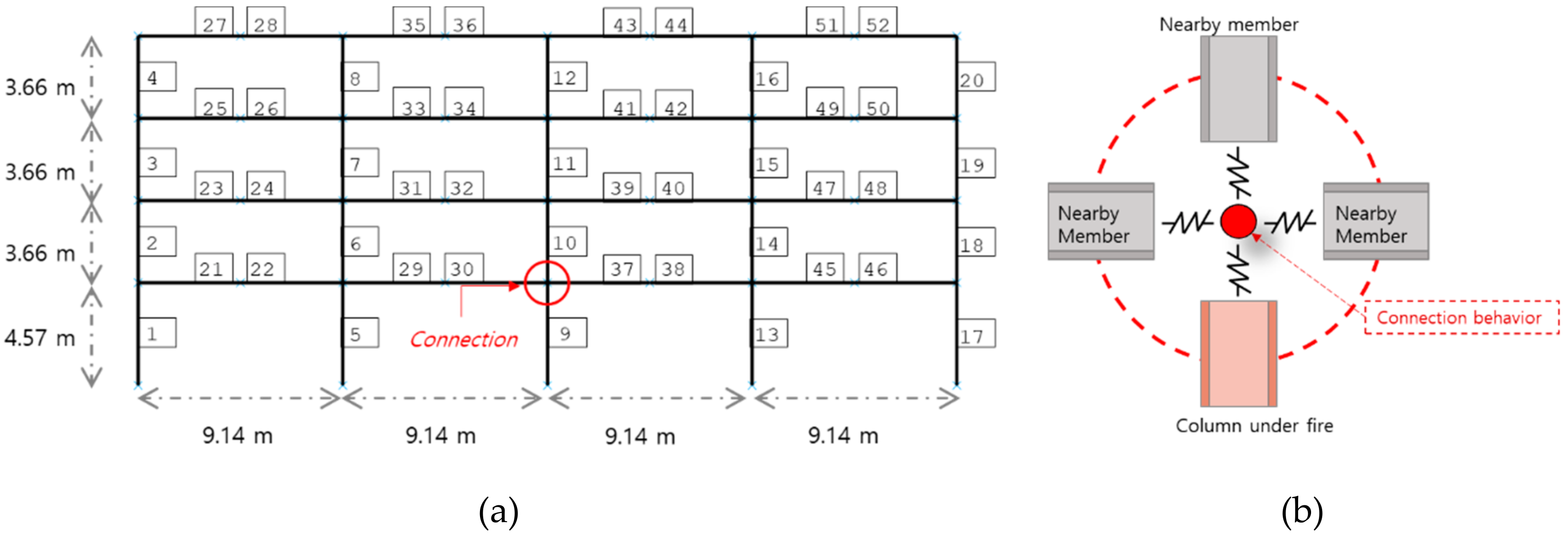
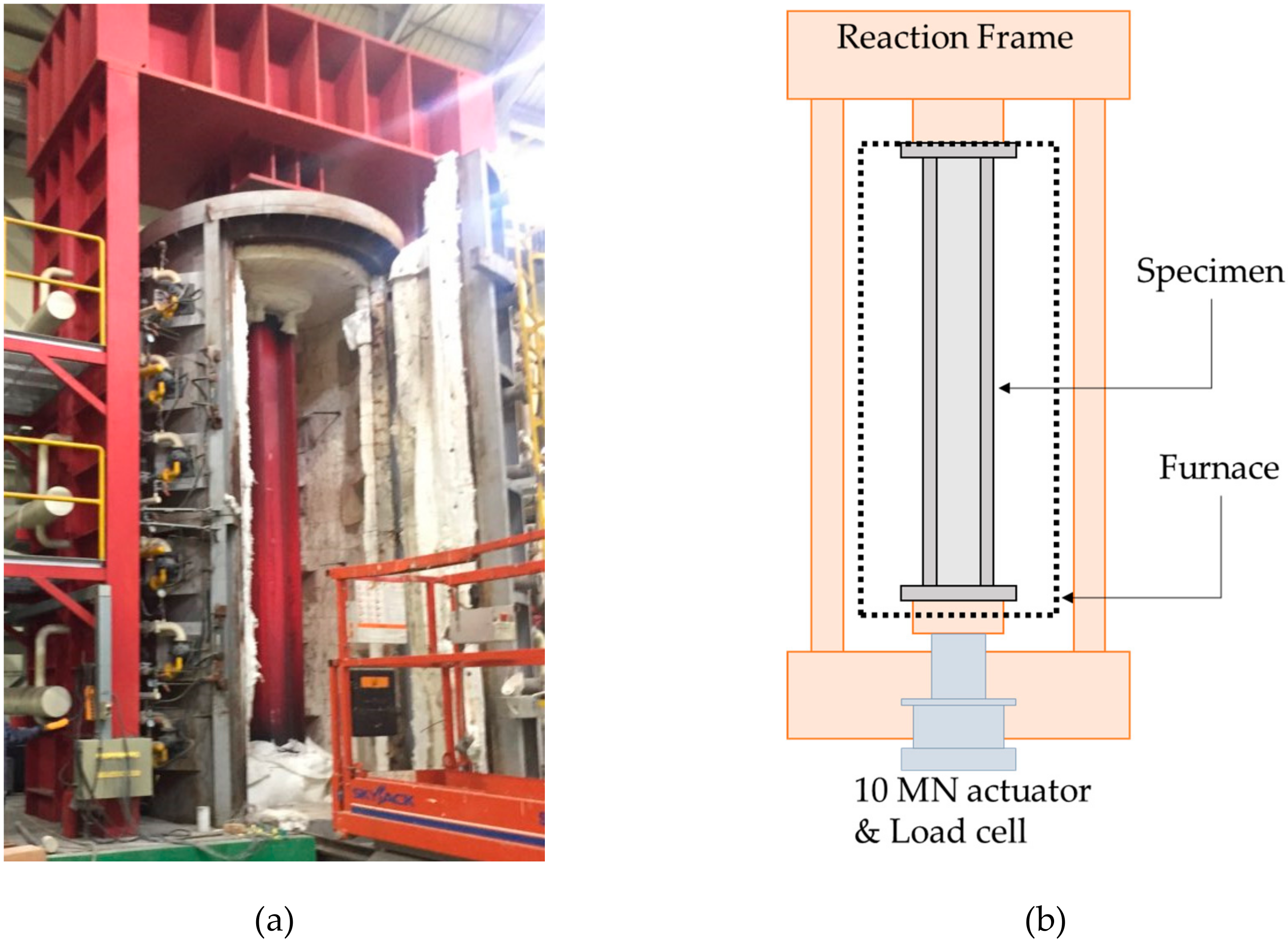
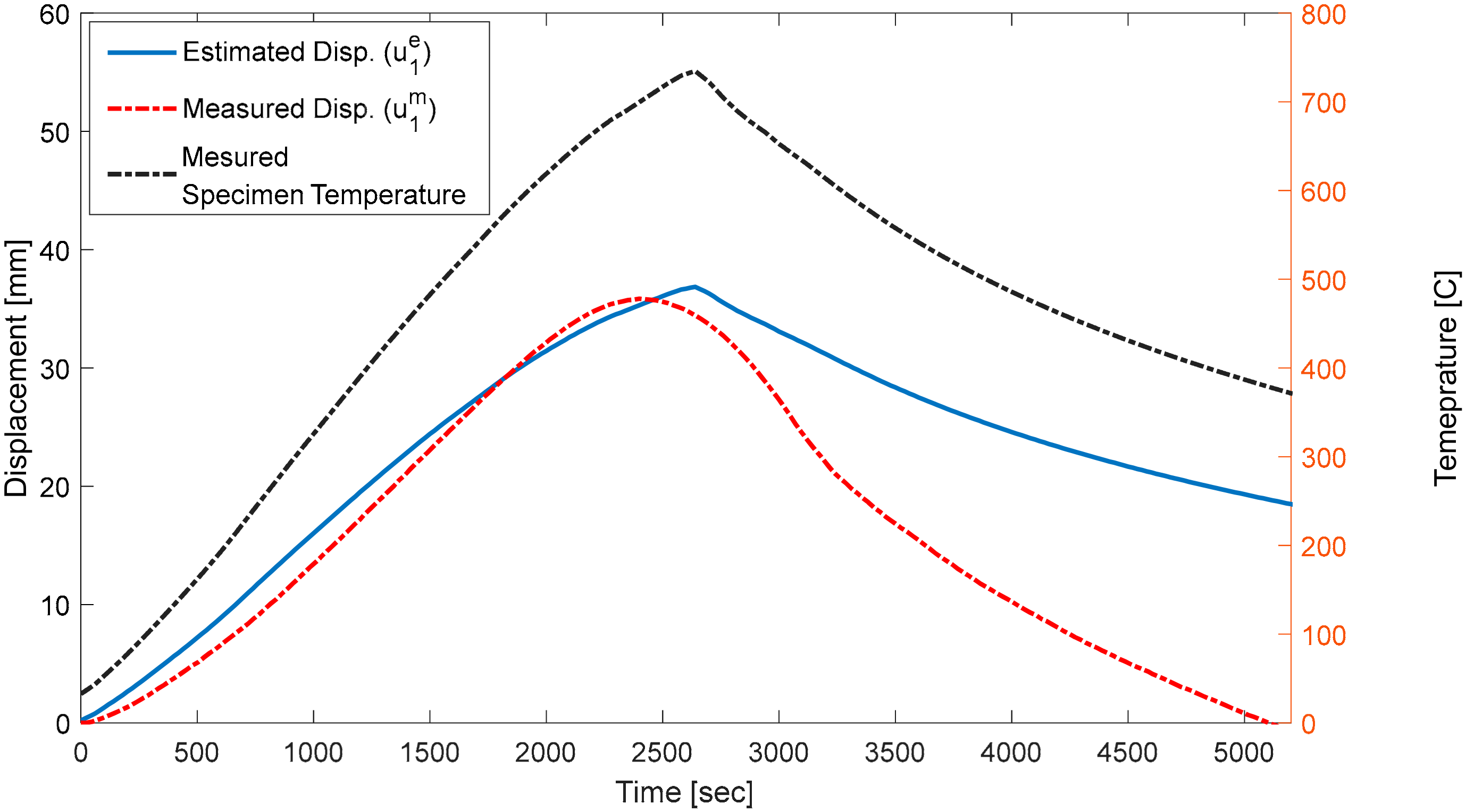

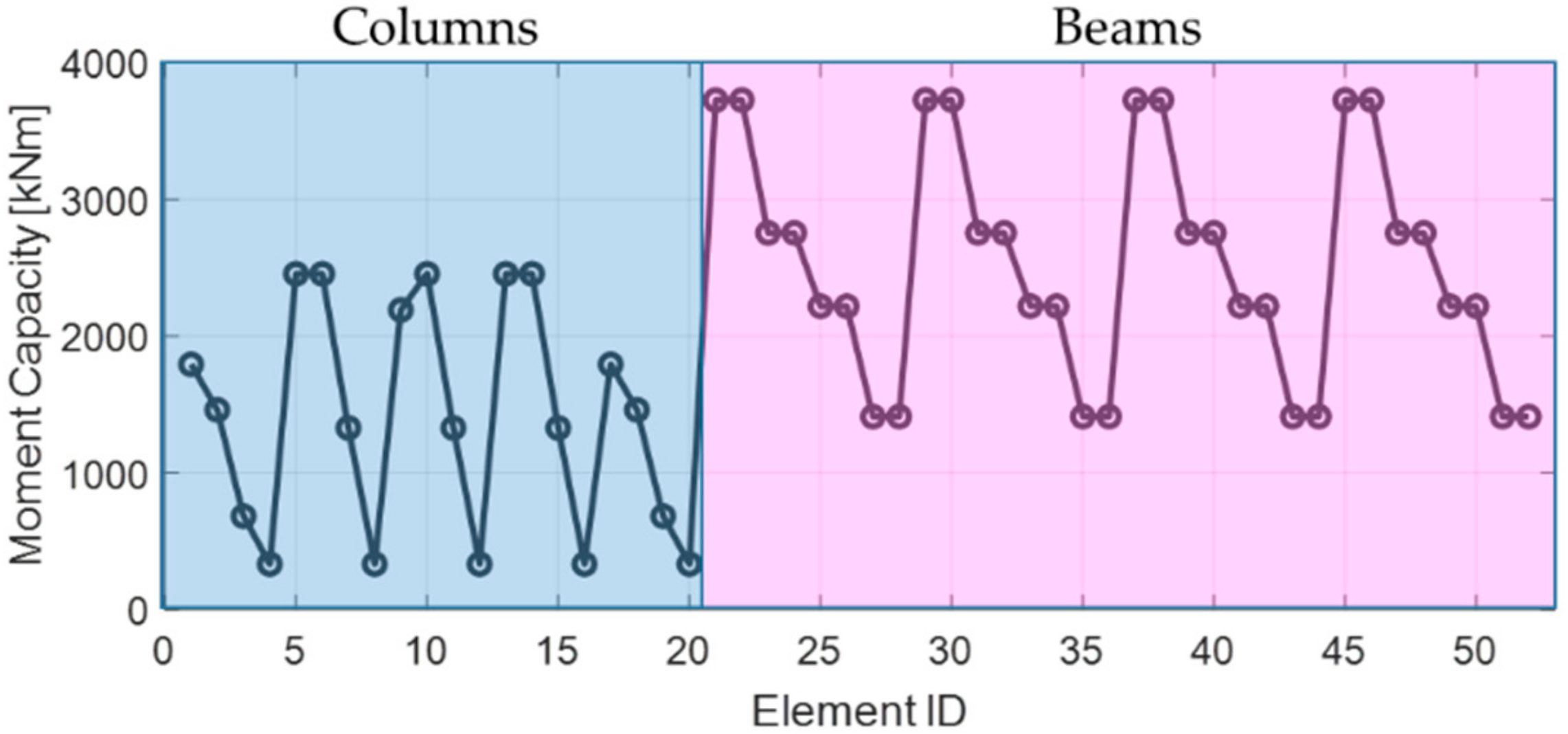
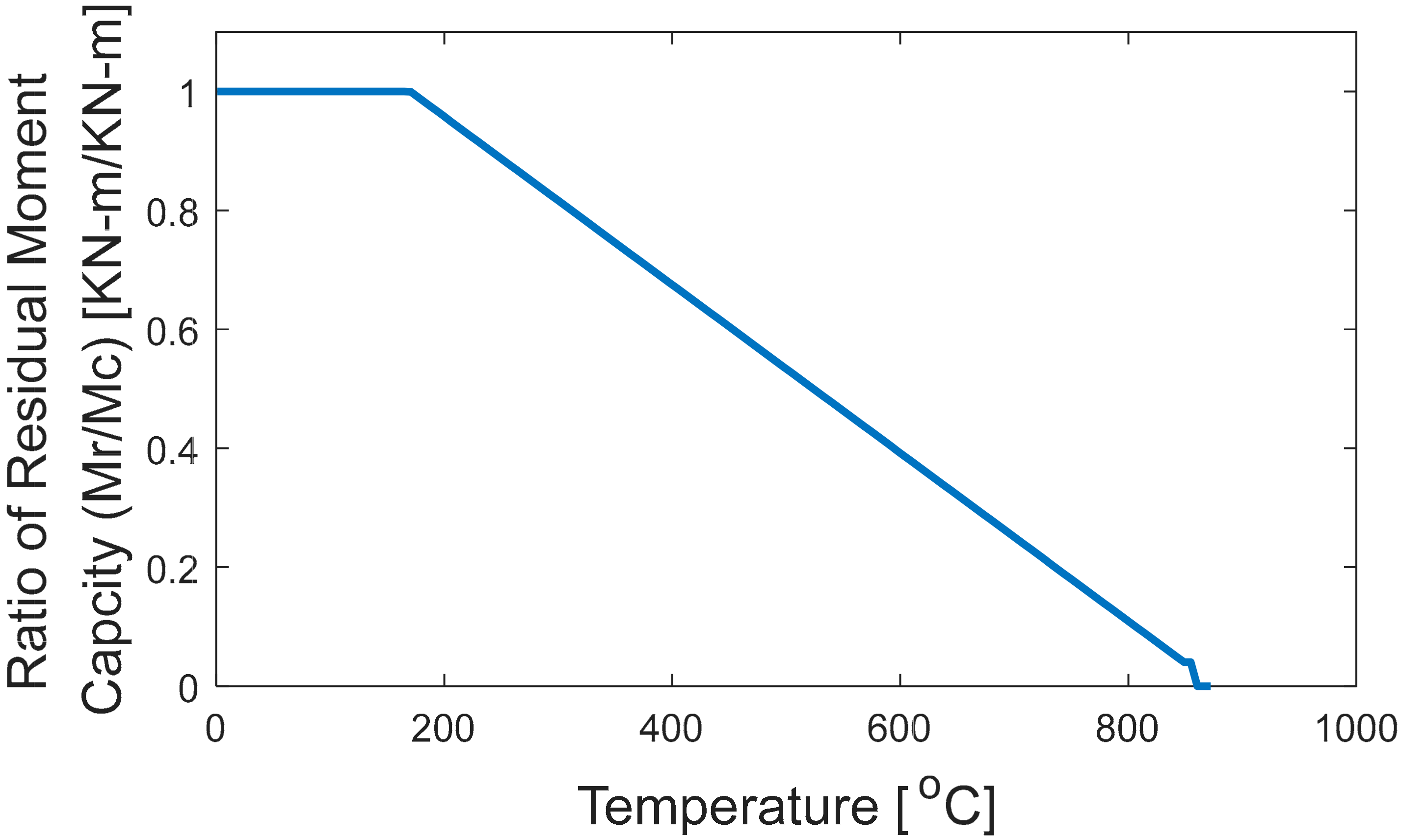

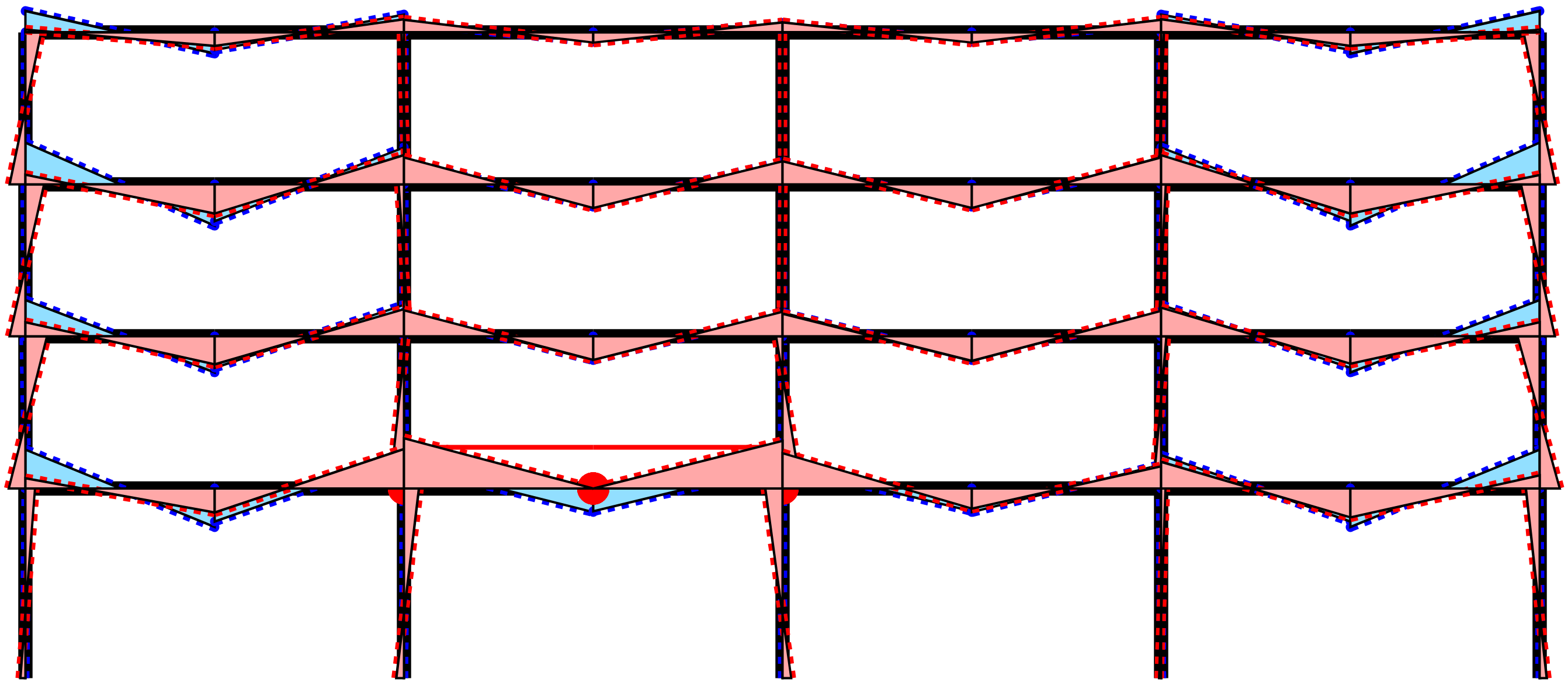
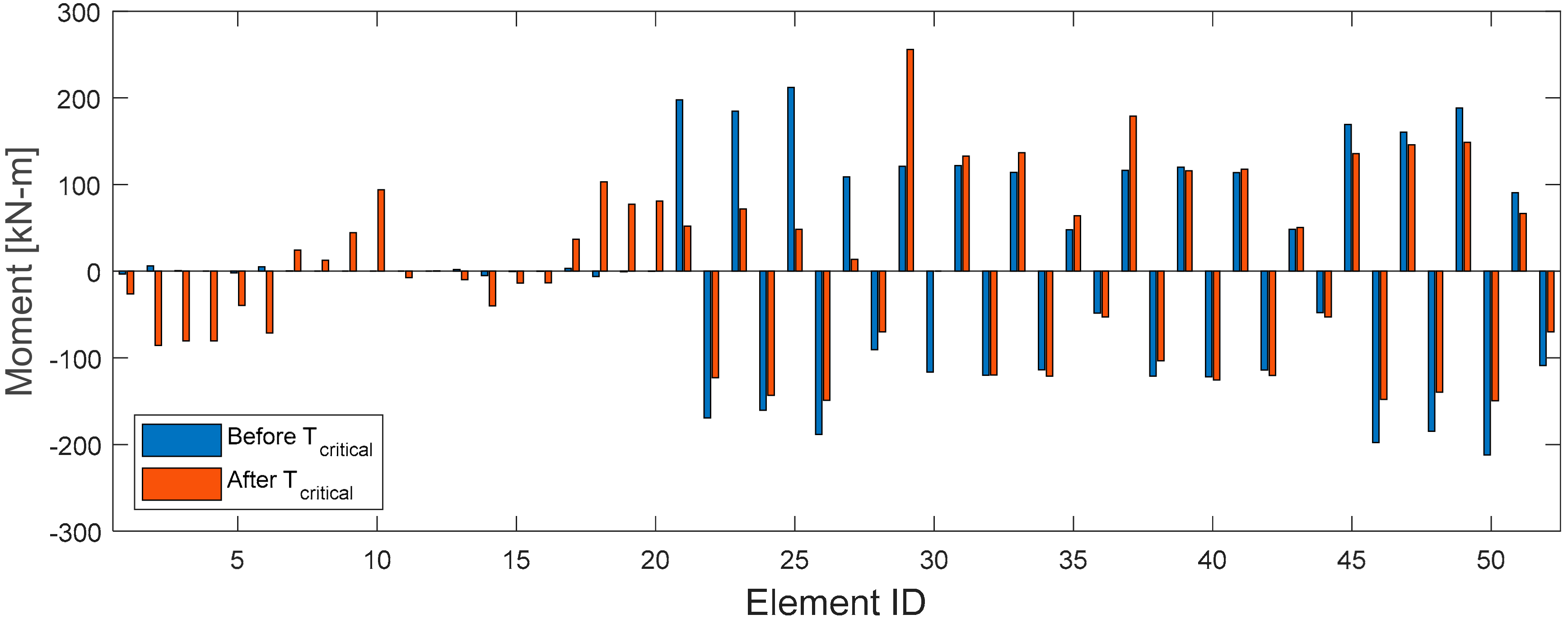
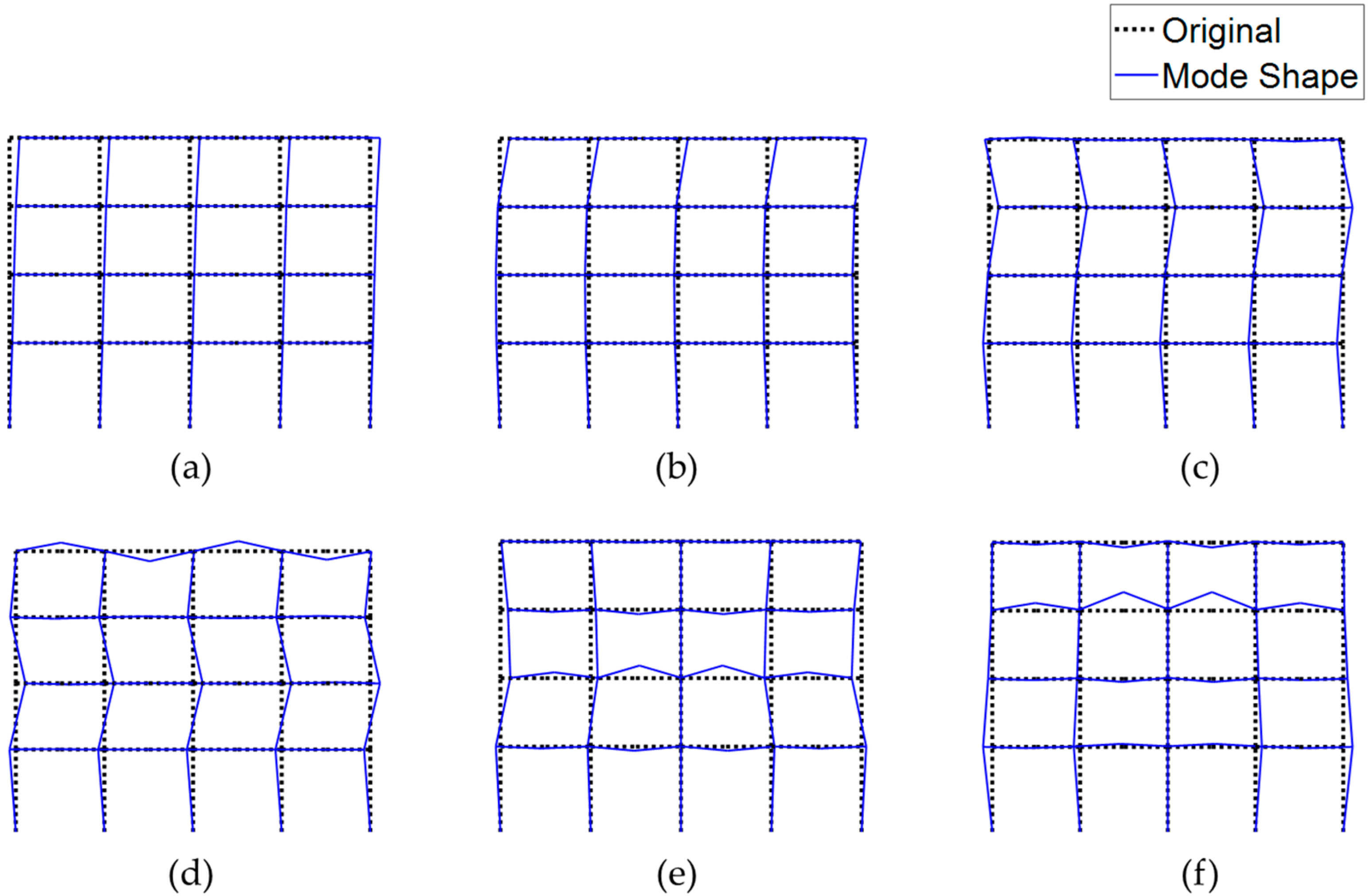
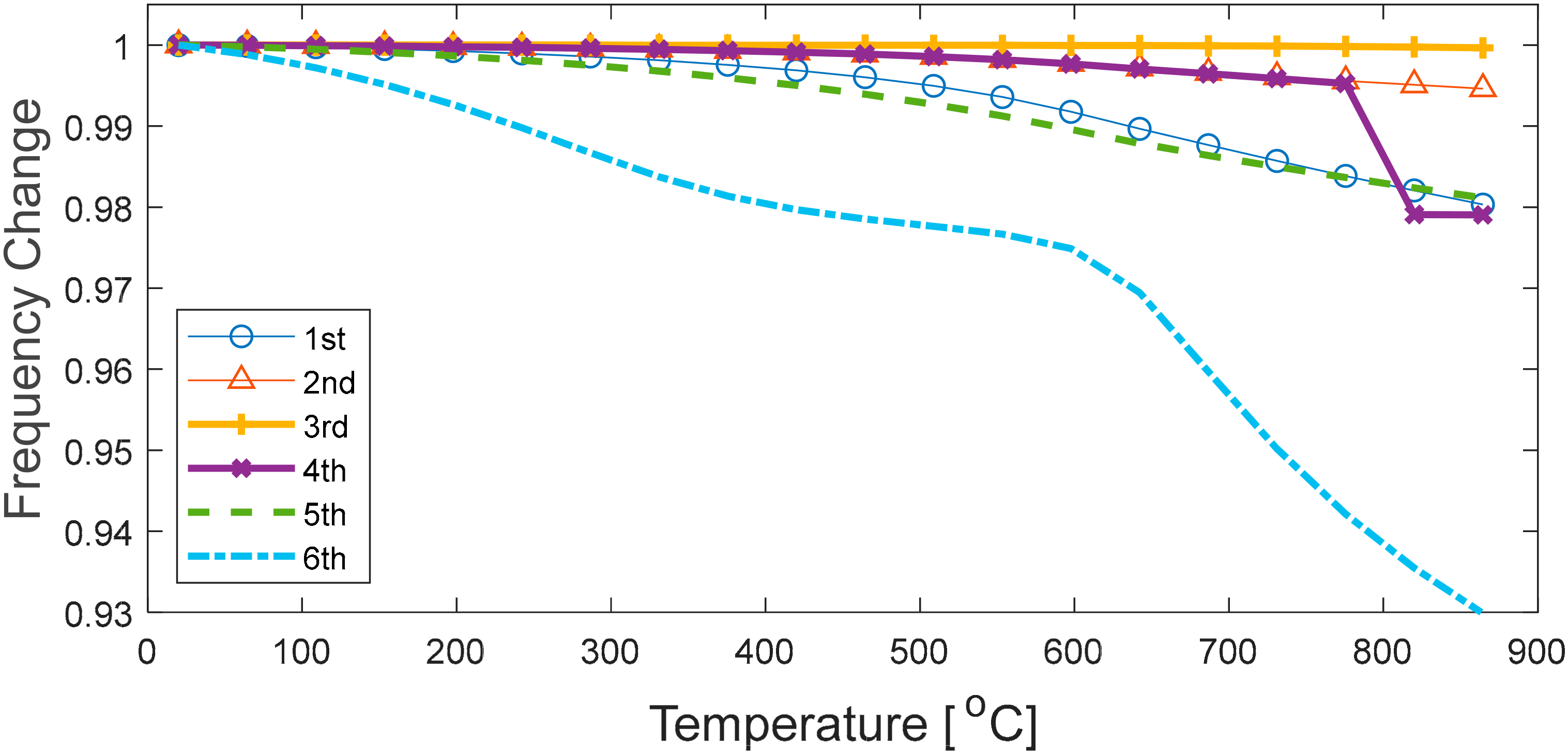
| Element ID | Section Property | Element ID | Section Property |
|---|---|---|---|
| 1, 17 | W14 × 233 | 7, 11, 15 | W14 × 176 |
| 2, 18 | W14 × 193 | 21, 22, 29, 30, 37, 38, 45, 46 | W33 × 130 |
| 3, 19 | W14 × 099 | 23, 24, 31, 32, 39, 40, 47, 48 | W27 × 114 |
| 4, 8, 12, 16, 20, | W14 × 074 | 25, 26, 33, 34, 41, 42, 49, 50 | W27 × 094 |
| 5, 6, 10, 13, 14 | W14 × 311 | 27, 28, 35, 56, 43, 44, 51, 52 | W24 × 068 |
© 2019 by the authors. Licensee MDPI, Basel, Switzerland. This article is an open access article distributed under the terms and conditions of the Creative Commons Attribution (CC BY) license (http://creativecommons.org/licenses/by/4.0/).
Share and Cite
Kim, R.E.; Piao, X.; An, J.H. The Behavior of a Multi-Story Steel Frame Subject to Measured Fire Using Calibrated Simple Approach. Sustainability 2019, 11, 5607. https://doi.org/10.3390/su11205607
Kim RE, Piao X, An JH. The Behavior of a Multi-Story Steel Frame Subject to Measured Fire Using Calibrated Simple Approach. Sustainability. 2019; 11(20):5607. https://doi.org/10.3390/su11205607
Chicago/Turabian StyleKim, Robin E., Xingyue Piao, and Jae Hong An. 2019. "The Behavior of a Multi-Story Steel Frame Subject to Measured Fire Using Calibrated Simple Approach" Sustainability 11, no. 20: 5607. https://doi.org/10.3390/su11205607
APA StyleKim, R. E., Piao, X., & An, J. H. (2019). The Behavior of a Multi-Story Steel Frame Subject to Measured Fire Using Calibrated Simple Approach. Sustainability, 11(20), 5607. https://doi.org/10.3390/su11205607




